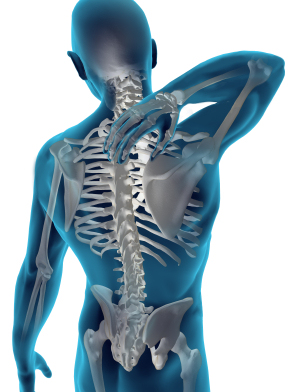Article as written for InShape News. You can see the full article here: http://inshapenewsflash.com/opinion/spinal-health/
 Sadly, I’ve recently watched my mother go through her second spinal fusion. This time around she had a double operation that resulted in severe physical and mental trauma. Was it just luck of the draw? Or could she have done something earlier in her life to prevent such drastic surgery?
Sadly, I’ve recently watched my mother go through her second spinal fusion. This time around she had a double operation that resulted in severe physical and mental trauma. Was it just luck of the draw? Or could she have done something earlier in her life to prevent such drastic surgery?
At the age of 42-years I’ve worked hard to ensure my spine is in great shape. But if I’d not made some serious changes to my life in 2003 then I’m convinced that I would be on the exact same path as my mother. I’d now like to share those simple changes that I made with you. I call these changes my “Seven Keys to Great Spinal Health.” These are as follows:
KEY 1: WEIGHT
It’s important that you maintain a suitable weight for your frame because every extra kilogram you’re carrying equates to an extra eight kilograms of force going through your spine. That’s why I lost over 70kg — half my body weight — and reduced the force on my spine by over 580kg.
KEY 2: SMOKING
I’ve never smoked, but if you do then quitting is a good place to start to improve your spinal health. Apart from a whole host of diseases research has also linked smoking with accelerated disc degeneration.
KEY 3: KEEP ACTIVE
I regularly perform yoga, Pilates and resistance training and it’s these core strengthening activities that help to stabilise and strengthen the spine. If you’re overweight then you should also focus on non-impact or low-impact cardio activities like swimming, walking, water aerobics and cycling. However, regardless of your size it’s critical that you stretch properly at least once a day to maintain flexibility, whilst ensuring you don’t hyper-flex or over extend your spine. The ‘Egoscue Method’ is an excellent example of good stretching exercises.
KEY 4: POSTURE
Whilst core strength helps to build better posture you also need to be aware of how to take care of it. You can do this by ensuring that your work space is ergonomic. This means that you should sit up straight without slouching, bend your knees when lifting, and that you hold heavy loads close to your body’s centre of gravity. It’s also vital that you wear the right footwear, as a good posture starts from the ground up. So ditch those heels and get some orthotics.
KEY 5: GENETICS
There’s not a lot you can do about your genetic structure, but by being aware of any hereditary factors means that you have an opportunity to deal with them. I have hereditary lymphedema which means I retain fluid and weight easily. To combat this, I drink up to 4 litres of water and I stay active throughout each day. My mother suffers from severe osteoarthritis. Therefore to prevent its onset, I maintain a healthy weight by eating a balanced high-vegetable diet, rich in trace elements and low in saturated fats and sugars. I also eat lots of raw ginger and take glucosamine and fish oil supplements.
KEY 6: NURTURE
Getting the right long term spinal care is critical. I use a fortnightly massage to help the muscles in my back relax, improving my range of motion. For acute pain treatment I see a physiotherapist, if needed, but it’s regular chiropractic work that’s proven vital. My chiropractor, Dr Tracy Kopp says, “Regular chiropractic treatment is all about keeping the spine supple and preventing it from jamming up,” and I couldn’t agree more.
KEY 7: REST AND RECOVERY
There’s no piece of furniture that exerts as much influence on your spine’s health as your bed. So it’s important to have the right mattress with the right support . But did you know that your sleeping position at night can compress your discs and can reduce your height by as much as 2 centimetres? So it’s also important that you maintain your spine’s ‘S’ curve alignment during sleep and the best way to do this is by sleeping on alternating sides, preferably with your knees slightly bent in a semi foetal position.
These “Seven Keys” may seem simple in themselves, but combined they form a powerful roadmap to maintaining great spinal health, reducing the future risk of spinal surgery and living a longer, fuller, more active life.

